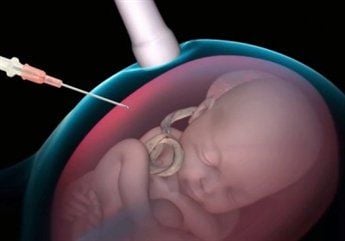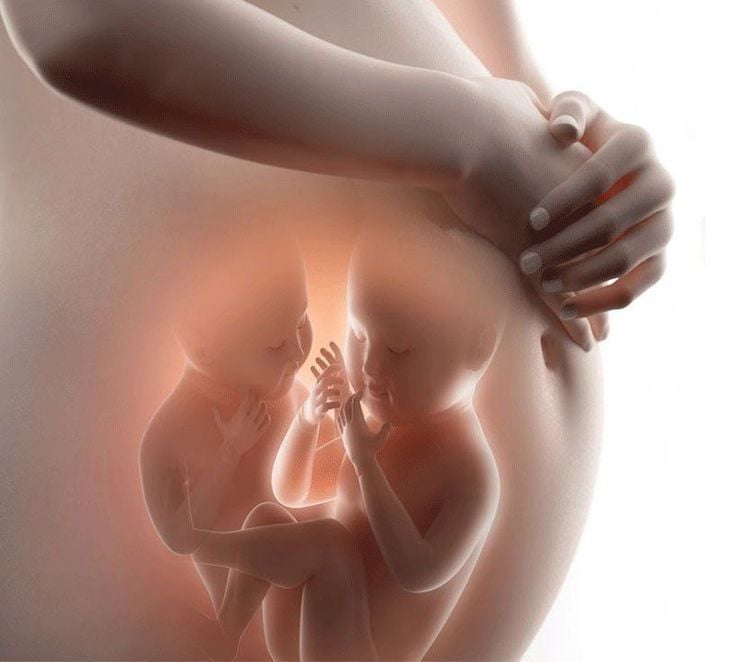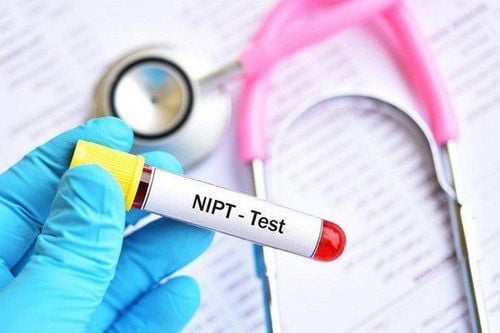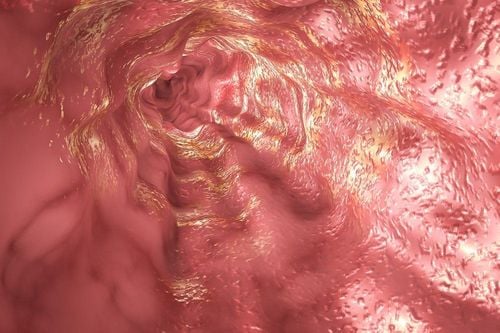This is an automatically translated article.
The article was written by Dr. Ly Thi Thanh Ha, Vinmec High Technology CenterNon-invasive prenatal testing (NIPT) uses free DNA or extracellular DNA (cfDNA) in maternal blood with very high sensitivity and specificity when screening for abnormalities such as trisomy 21, 18 and 13. In large studies the sensitivity for trisomy 21, 18 and 13 was 99.7%, 97.9% and 99%, respectively, whereas false positive rate (FPR) is only 0.04% for each type of trisomy. Besides, with the single X chromosome group (monosomy X - Turner syndrome), the sensitivity is only 95.8% and the false positive rate is 0.14%. With the above parameters, NIPT is a screening test with very high accuracy. However, NIPT is still a screening test and is not a substitute for diagnostic testing.
1. Free fetal DNA from the placenta
The primary reason why the noninvasive prenatal screening test is not a diagnostic test despite its high sensitivity and specificity is due to the fact that the free fetal DNA in the maternal blood stream comes from placental cells released after programmed cell death (apoptosis). Since noninvasive prenatal screening tests only evaluate chromosomal abnormalities in these cells and not directly in the fetus, cases with differences in the genetic material Both the fetus and the placenta affect NIPT results. And in cases where there is a difference between the fetus and the placenta, we call it a confined placental mosaicism (CPM). Placental mosaicism is more likely to cause false-positive results on noninvasive prenatal screening and is more common in X monosomy, trisomy 13 than trisomy 18 or trisomy. body 21. And in cases of suspected false positives (especially in the X-chromosome group), for definitive diagnosis we need to use DNA from the amniotic fluid sample (via amniocentesis) rather than DNA. from placental samples (via chorionic villus sampling method).

Sử dụng DNA từ mẫu gai nhau xét nghiệm sàng lọc tiền sinh chẩn đoán xác định
2. Placental mosaicism causes false negatives
As mentioned above, placental mosaicism often causes false positives rather than false negatives, but according to the study of Samura et al., the false negative rate of prenatal screening tests is about 0.01%. This is because a large number of cells in the placenta carry a normal set of chromosomes, only a small number of placental cells carry an abnormality resulting in a negative non-invasive prenatal screening test result.
3. The results are completely opposite between placenta and fetus
In very rare cases a false positive for one type of chromosomal abnormality and a false negative for another type of chromosomal abnormality can occur. There is a case of a high-risk result with a single X chromosome, but the fetus carries 47,XYY. The reason is that the undifferentiated Y chromosome causes two cell lines 45,X and 47,XYY with cell line 45,X forming the placenta and cell line 47,XYY forming the fetus.
4. Presence of vanishing twins
Presence of aborted twins in early pregnancy (which the woman and her doctor may or may not be aware of) can cause a false-positive NIPT result in the event of a miscarriage. and placenta with abnormal number of chromosomes. This is because the fetal placental cells that have disappeared are still releasing free DNA into the maternal blood stream at the time of sampling. Persistence of cfDNA from the placenta of these aborted twins can persist for weeks after the aborted fetus. The larger the gestational age at dissolution, the longer this period is.

Sự hiện diện của song thai tiêu biến gây ra kết quả NIPT dương tính giả
5. Mother may have mosaic or malignancy affecting NIPT results
Normally, when maternal blood is taken as a noninvasive prenatal screening test at about 10 weeks, maternal and placental cfDNA rates are about 90% and 10%, respectively. However, mosaicism in the mother (common X monozygotic mosaicism) can affect the NIPT results (usually causing a false positive for X monosomy). In addition, in some cases, maternal malignancy can also cause erroneous results of noninvasive prenatal screening tests.
6. Conclusion
NIPT is a screening test with very high sensitivity and specificity (especially for trisomy 21, 18 and 13). However, NIPT results cannot be used as the sole factor in making pregnancy decisions. In addition, NIPT only examines the level of chromosome number. Therefore, to screen the entire pregnancy, it is necessary to combine with clinical and other tests as well as consult the test results with an obstetrician and a geneticist.Non-invasive prenatal screening technique NIPT is being implemented at Vinmec International General Hospital, bringing outstanding improvement in antenatal screening results, high service quality according to the standards recommended by ILLUMINA help early and effective intervention with fetuses with malformations. Non-invasive prenatal screening method (NIPT) is considered the "key" to "decode" fetal malformations from a very young gestational age. In addition, at the system of Clinics and Vinmec International General Hospital nationwide, there is a PACKAGE Maternity Program to help pregnant women rest assured to take care of their health and their baby's health both before birth - during birth and after birth. at birth with all necessary tests.
Please dial HOTLINE for more information or register for an appointment HERE. Download MyVinmec app to make appointments faster and to manage your bookings easily.













